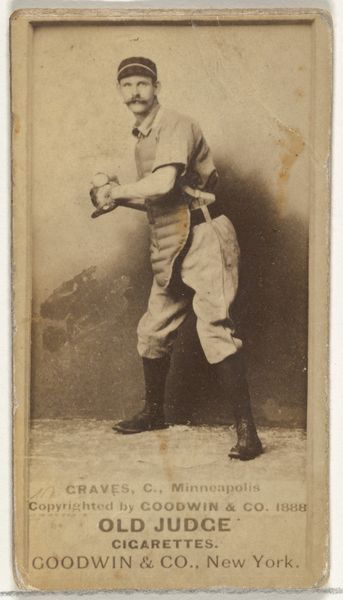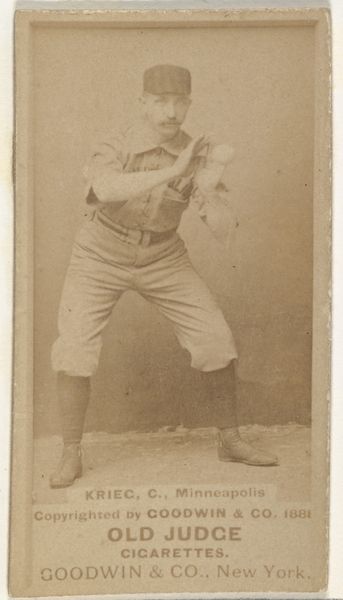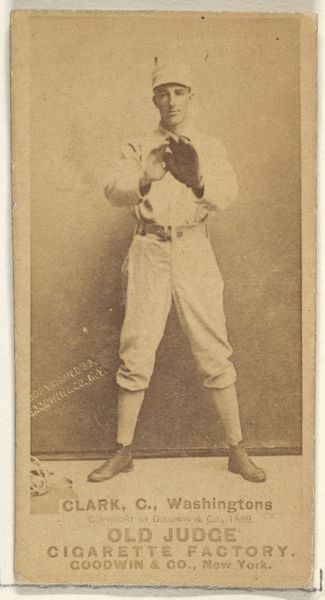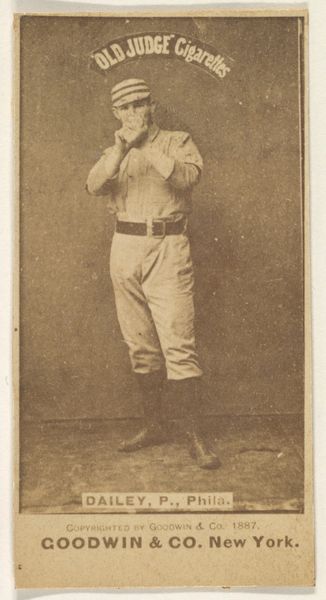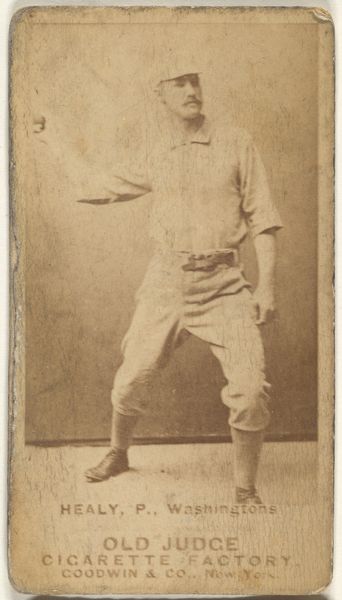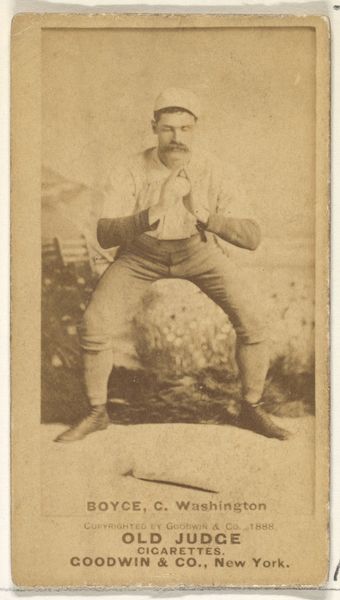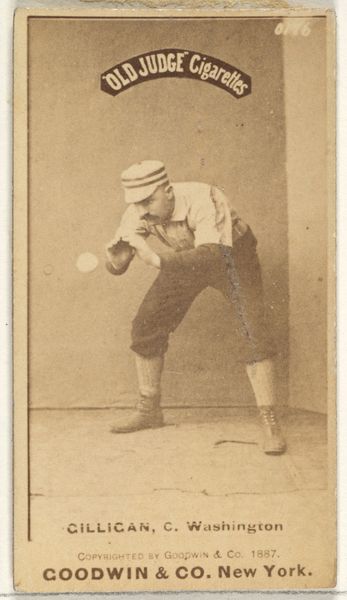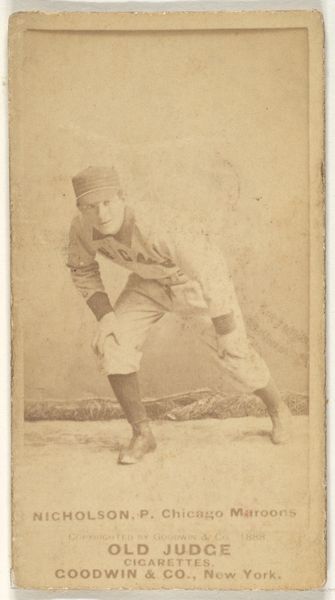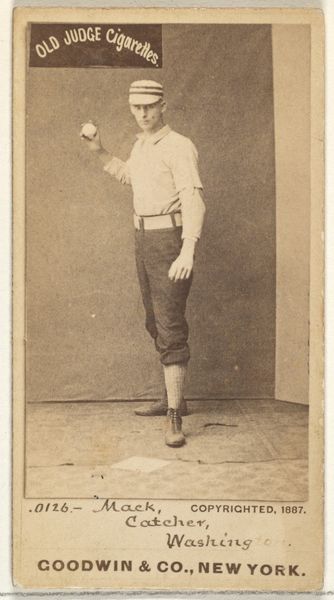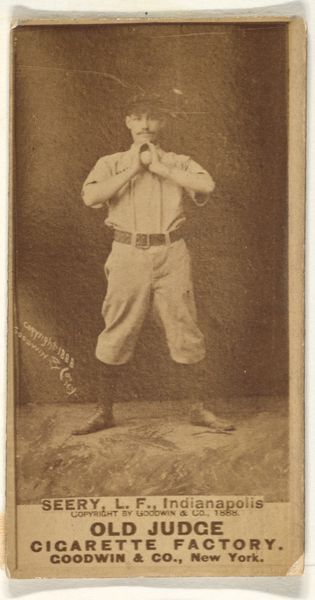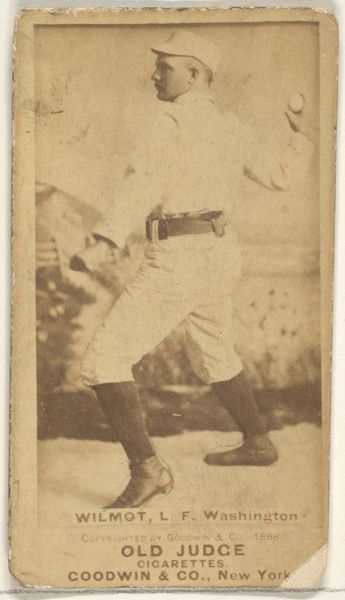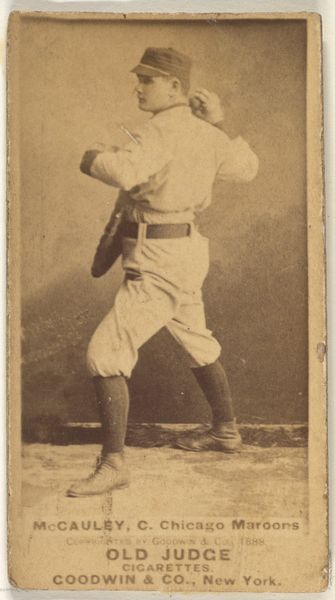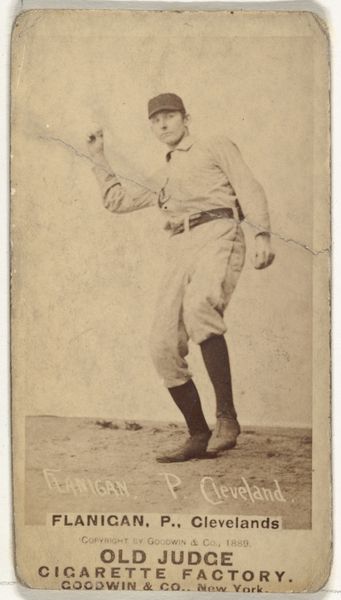
Samuel "Cliff" Clifford Carroll, Left Field, Washington Nationals, from the Old Judge series (N172) for Old Judge Cigarettes 1887
0:00
0:00
print, photography, albumen-print
#
portrait
# print
#
baseball
#
photography
#
genre-painting
#
albumen-print
Dimensions: sheet: 2 11/16 x 1 3/8 in. (6.9 x 3.5 cm)
Copyright: Public Domain
Curator: Ah, here’s something rather delightful: a sepia-toned albumen print from 1887, originally packaged with Old Judge Cigarettes. It's a portrait of Samuel "Cliff" Clifford Carroll, a left fielder for the Washington Nationals. Editor: It feels intensely still. The grainy texture of the print lends it this faded, dreamy quality, like a forgotten memory resurrected. It’s staged, of course, yet his face hints at something a little more real. Curator: Absolutely, the charm lies in that duality. These cards, distributed by Goodwin & Company, aimed to capture these athletes as both performers and personalities, becoming collectible objects, proto-baseball cards, if you will. Editor: It’s interesting to think about how the commercial context shapes our reading of the image. This isn't simply a portrait of an athlete; it's a commodity, wrapped up in notions of celebrity and consumption. Consider also how class intersects with leisure. Cigarettes were consumed predominately by the working classes, where the rise of organized sports, such as baseball, offered an opportunity for individuals from all walks of life to gather and collectively experience the games together, but not all were always welcome. Curator: Indeed. The photo, I think, strives for a kind of casual dynamism, Carroll in mid-throw, a posed action shot before such things became commonplace. The backdrop is deliberately simple, keeping the focus entirely on the player. I'm drawn to the light reflected on the wall behind him, it makes for a striking background. Editor: Note that the absence of explicitly locating him within a playing field raises questions of representation, almost as though his physical self is separate from the field, but that is part of the overall goal in depicting a new sense of public masculinity. How does his individual persona contribute to defining “Americanness”? Curator: A fantastic question! The photograph exists not merely as documentation but as myth-making. It taps into the era's burgeoning obsession with celebrity. And it also gives a curious twist, doesn't it, when one considers how art continues to function similarly today? Editor: The convergence of sport, commerce, and identity makes it incredibly rich, a little snapshot packed with so much cultural information. Curator: Agreed, a beautiful little memento of a time when baseball was rapidly becoming America’s pastime. It makes one wonder what Mr. Carroll was really thinking behind that stoic gaze. Editor: Leaving me to reflect on the power of early photography to simultaneously construct and document reality.
Comments
No comments
Be the first to comment and join the conversation on the ultimate creative platform.
